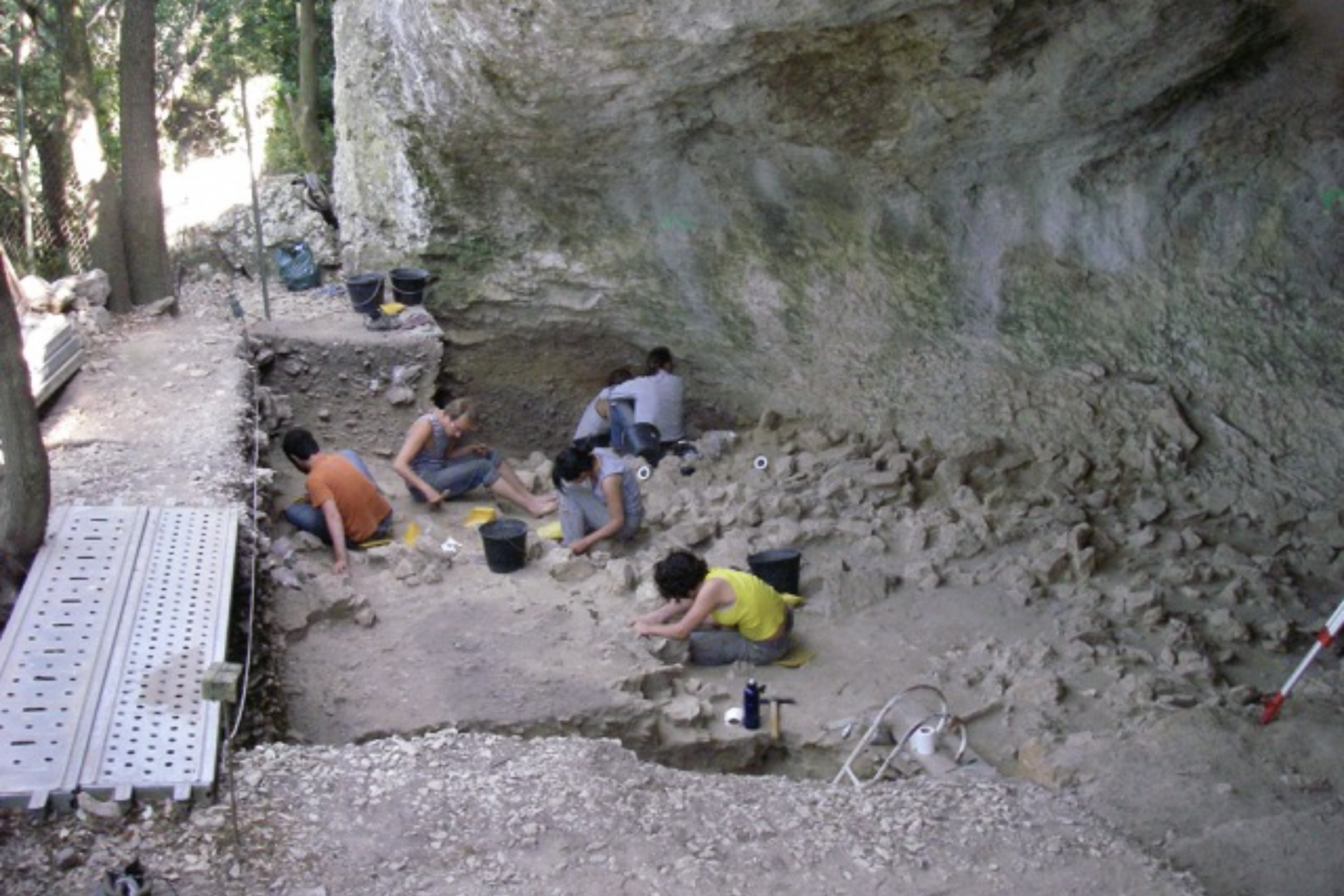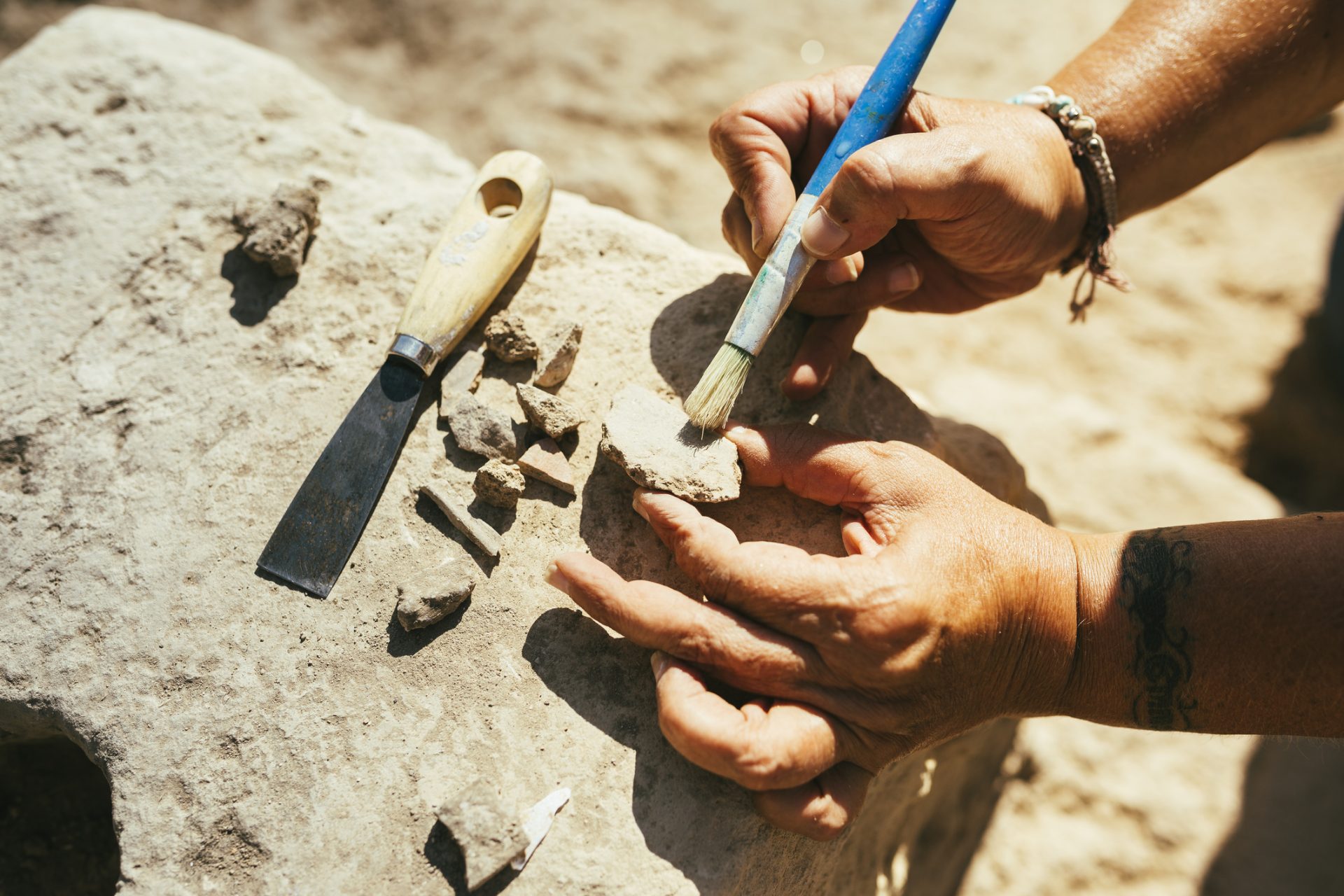The discovery of a single ancient tooth might rewrite prehistory
The story of how modern human beings came to be is one that researchers have painstakingly pieced together over centuries but it's also a tale that is constantly evolving as we discover new things from our prehistoric past.
A good example of how a tiny piece of evidence can change what we know about our beginnings can be found in a prehistoric molar that may upend everything we thought we knew about the migration of early humans.
Photo Credit: Twitter @tommyhigham
The tooth in question was unearthed in France’s Grotte Mandrin, which is a cave in the Rhône Valley and an area that was once a thriving epicenter of wildlife according to the Smithsonian Magazine.
Photo credit: Thilo Parg, Own Work, Wiki Commons
Grotte Mandrin was so attractive to ancient humans that it was home to migratory Neanderthals for tens of thousands of years, but they might not have been the only primates living in the area.
In February 2022, researchers published new evidence about a possible human tooth found at Grotte Mandrin that suggested homo sapiens were living in Europe 10,000 years earlier than previously thought according to the New York Times.
“This is really interesting and exciting,” University of Tübingen’ Katerina Harvati told the New York Times in an email from around the time her study on the tooth was published.
“It shows the complexity of the modern human dispersal in the European continent and eventual replacement of Neanderthals,” Harvati added, but the find had more to reveal.
Unfortunately, the researchers were never able to confirm that the tiny baby tooth they found was human because of other failed attempts to exextract DNA samples from animal teeth unearthed in the cave, according to the New York Times.
Without proper confirmation, the theory that humans migrated to Europe much earlier than we previously thought remained just that—a theory.
However, more than a year after the original study on the tooth was published, one of its authors made a new claim that may someday help prove the tooth found at Grotte Mandrin could have been human.
Among the other things discovered in Grotte Mandrin with the ancient tooth were stone tools that researcher Ludovic Slimak thought could have been made by early humans.
However, at the time there wasn’t enough concrete evidence to prove that the tools were made by humans rather than Neanderthals according to the New York Times article, at least until new research was revealed in 2023.
Slimak published a predictive study suggesting that the sophisticated tools found at Grotte Mandrin were made by a similar technique used by humans in Lebanon and that the parallels couldn’t be mere coincidence.
Photo by Twitter @tommyhigham
According to Smithsonian Magazine, Slimak found a trove of stone tools from Ksar Akil, an ancient prehistoric site just outside of Beirut, at The Peabody Museum and he knew that the method used to make those artifacts was the very same as one used in Grotte Mandrin.
Photo by Twitter @habib_b
“You can read a flint like you can read a book,” Slimak told Smithsonian Magazine. “It’s not simply the end product, but you can see the technical phases of production."
“When I opened those boxes,” Slimak said, “I had a very huge surprise: It was the same technical process. All the phases of production were the same as at Grotte Mandrin.”
Slimak went on to explain that there were several ways to create flint tools but stressed that the probability of two groups using the same techniques was very unlikely to have happened.
“It’s something almost impossible unless you are just the same people,” the French archaeologist said. “It was very clear to me that I was facing the same populations and the same culture.”
From this data, Slimak proposed that human migration to Europe took place in three distinct phases and that the tooth and tools found in Grotte Mandrin represented finds from the first wave that took place 10,000 years before we previously thought!
More for you
Top Stories
































